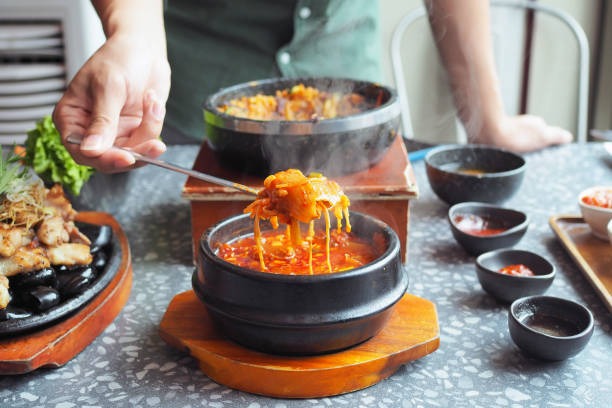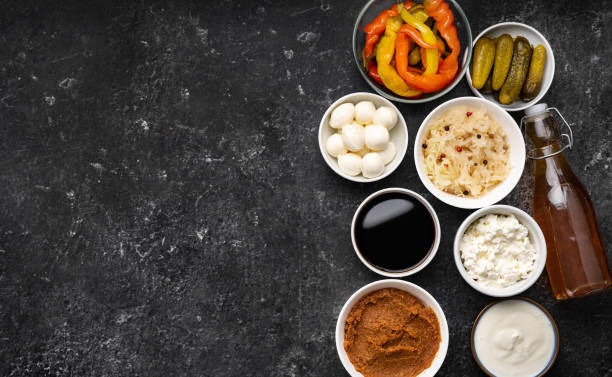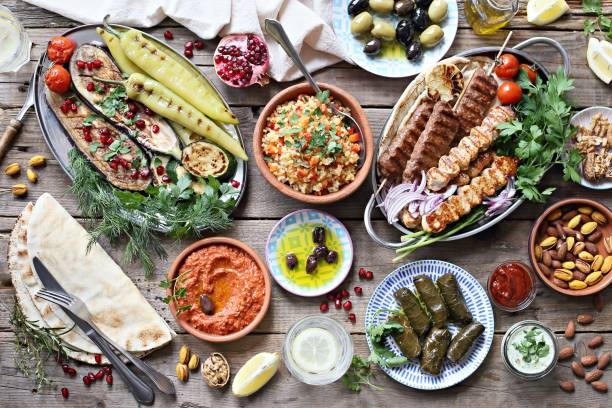The kitchen timer just went off, and your perfectly cooked chicken breast is resting on the cutting board. But as you look at your plate, something feels incomplete. That’s the magic moment when the right side dish transforms a good meal into an unforgettable dining experience.
Last summer, I watched my neighbor Sarah serve the most incredible grilled salmon I’d ever tasted—but what made everyone ask for seconds wasn’t just the fish. It was her honey-glazed carrots and herb-crusted potatoes that turned a simple weeknight dinner into something restaurant-worthy. That’s when it hit me: side dishes aren’t just afterthoughts; they’re the supporting cast that makes the main character shine.
Side dishes serve as the bridge between nutrition and flavor, filling gaps in both taste and nutritional content. They add color, texture, and variety to your plate while helping you create balanced meals that satisfy both your palate and your body’s needs. Whether you’re a seasoned home cook or someone who considers boiling water an achievement, mastering easy side dishes will elevate every meal you prepare.
This comprehensive guide will walk you through everything you need to know about creating delicious, nutritious, and visually appealing side dishes that complement any main course while fitting seamlessly into your busy lifestyle.
Understanding the Role of Side Dishes
Complementing the Main Course
Side dishes work like background music in a movie—they enhance the overall experience without overwhelming the star. A perfectly grilled steak needs something to balance its richness, while delicate fish benefits from sides that won’t compete with its subtle flavors.
The key lies in understanding flavor profiles and textures. Rich, heavy main courses pair beautifully with light, acidic sides that cut through the richness. Conversely, lean proteins welcome heartier, more substantial accompaniments that add satisfying weight to the meal.
Nutritional Balance
Beyond flavor, side dishes play a crucial role in creating nutritionally complete meals. They’re your opportunity to sneak in those extra servings of vegetables, whole grains, and fiber that transform a protein-heavy plate into a well-rounded dining experience.
A colorful array of side dishes ensures you’re getting a variety of vitamins, minerals, and antioxidants. Think of your plate as a canvas where different colored foods paint a picture of optimal nutrition.
Types of Side Dishes
Vegetable Sides: Nature’s Rainbow
Vegetable sides are the workhorses of the side dish world, offering endless variety and nutritional benefits. From simple steamed broccoli to elaborate ratatouille, vegetables can be transformed into show-stopping accompaniments.
Roasted vegetables bring out natural sweetness through caramelization, while quick sautés preserve crunch and bright flavors. Raw preparations like coleslaws and fresh salads add refreshing contrast to cooked main courses.
Starch-Based Sides: Comfort and Satisfaction
Starch-based sides provide the comfort factor that makes meals feel complete and satisfying. Classic mashed potatoes, creamy risottos, and perfectly cooked rice serve as flavor vessels that soak up sauces and gravies.
These sides offer sustained energy and help balance plates that might otherwise feel too light. They’re particularly important when serving lean proteins or vegetable-heavy main courses.
Grain-Based Sides: Ancient Nutrition, Modern Appeal
Grain-based sides have experienced a renaissance as home cooks discover the versatility of quinoa, farro, bulgur, and other whole grains. These nutrient-dense options provide protein, fiber, and complex carbohydrates.
Grain salads work beautifully for meal prep, improving in flavor as they sit. Hot grain preparations make excellent bases for seasonal vegetables and herbs.
Legume-Based Sides: Plant-Powered Protein
Legumes offer plant-based protein while adding hearty substance to any meal. From simple three-bean salads to complex lentil pilafs, these sides satisfy vegetarians and omnivores alike.
Bean-based sides are budget-friendly, filling, and incredibly versatile. They pair especially well with grilled meats and roasted vegetables.
Popular Side Dish Recipes
Classic Mashed Potatoes: The Ultimate Comfort Side

Nothing beats perfectly creamy mashed potatoes that melt in your mouth. The secret lies in choosing the right potato variety—Yukon Golds offer the perfect balance of starch and creaminess.
Start with 2 pounds of peeled, cubed potatoes in cold, salted water. Boil until fork-tender, drain thoroughly, then mash with warm milk and butter. Season generously with salt and white pepper for restaurant-quality results every time.
Roasted Asparagus with Parmesan: Elegant Simplicity
This five-ingredient side dish proves that simple can be spectacular. Fresh asparagus spears, olive oil, salt, pepper, and freshly grated Parmesan create a side that’s both elegant and effortless.
Roast at 425°F for 12-15 minutes until tender-crisp, then finish with Parmesan and a squeeze of lemon. The key is not overcooking—asparagus should still have some bite.
Quinoa Salad with Lemon Vinaigrette: Nutritional Powerhouse
This protein-packed grain salad combines fluffy quinoa with fresh herbs, diced vegetables, and a bright lemon vinaigrette. It’s perfect for meal prep since flavors improve overnight.
Cook quinoa in broth instead of water for extra flavor, then toss with diced cucumber, cherry tomatoes, fresh parsley, and a simple lemon-olive oil dressing.
Tips for Preparing Perfect Side Dishes
Seasoning Techniques: Building Flavor Layers
Proper seasoning transforms ordinary ingredients into extraordinary sides. Season at multiple stages—salt your pasta water, season vegetables before roasting, and taste and adjust at the end.
Don’t forget acid—a splash of vinegar or squeeze of citrus brightens heavy dishes and balances rich flavors. Fresh herbs added at the end provide aromatic finish that makes everything taste more vibrant.
Cooking Methods: Choosing the Right Technique
Different vegetables shine with different cooking methods. Root vegetables love roasting, which concentrates their natural sugars. Delicate greens prefer quick sautés or steaming to preserve their texture and color.
Understanding these preferences helps you choose techniques that highlight each ingredient’s best qualities rather than masking them.
Presentation Matters: Making It Beautiful
Visual appeal affects how food tastes—it’s not just vanity. Colorful sides make meals more appetizing and photos more Instagram-worthy.
Consider height, color contrast, and texture when plating. A sprinkle of fresh herbs, a drizzle of good olive oil, or a scatter of toasted nuts can transform humble vegetables into restaurant-worthy presentations.
Adapting Side Dishes for Dietary Needs

Gluten-Free Options: No Compromise on Flavor
Gluten-free side dishes don’t require special ingredients—many classic sides are naturally gluten-free. Focus on vegetables, rice, quinoa, and potatoes as your foundation.
Be mindful of hidden gluten in seasonings and sauces. When in doubt, make your own dressings and marinades using naturally gluten-free ingredients.
Vegan and Vegetarian Options: Plant-Based Perfection
Vegan sides rely on technique and seasoning rather than dairy or eggs for richness. Nutritional yeast adds cheesy flavor, while cashew cream creates luxurious textures.
Roasting vegetables until caramelized, using flavorful oils, and incorporating umami-rich ingredients like mushrooms or miso paste creates deeply satisfying plant-based sides.
Low-Carb Options: Satisfying Without the Starch
Low-carb sides focus on non-starchy vegetables prepared in satisfying ways. Cauliflower rice, zucchini noodles, and spaghetti squash provide familiar textures without the carbs.
Healthy fats from avocado, nuts, and olive oil add satiety while keeping carb counts low. These sides prove that low-carb doesn’t mean low-flavor.
Pairing Side Dishes with Main Courses
Beef: Bold Flavors Need Strong Partners
Beef’s rich, robust flavor pairs beautifully with sides that can hold their own. Think roasted root vegetables, creamy gratins, and bold salads with strong dressings.
Acidic sides like tomato salads or vinegar-based slaws cut through beef’s richness, while earthy mushroom preparations complement its meaty flavor.
Chicken: Versatile Canvas for Creativity
Chicken’s mild flavor makes it incredibly versatile for side dish pairings. Light, fresh sides work well with grilled chicken, while heartier preparations complement roasted or braised preparations.
Consider the cooking method and seasonings used on the chicken when selecting sides. Mediterranean herbs call for Mediterranean sides, while Asian flavors pair with Asian-inspired accompaniments.
Fish: Delicate Balance Required
Fish requires gentle side dish partners that won’t overwhelm its delicate flavor. Light vegetable preparations, simple grain salads, and fresh herb-heavy sides work beautifully.
Avoid heavy, creamy sides that might mask the fish’s subtle taste. Instead, opt for bright, clean flavors that enhance rather than compete.
Vegetarian Mains: Building Complete Nutrition
Vegetarian main courses often need heartier sides to create satisfying, complete meals. Grain-based sides, legume preparations, and substantial salads help build nutritionally complete plates.
Consider protein complementarity—combine grains with legumes to create complete protein profiles that satisfy both nutritionally and physically.
Seasonal Side Dishes

Spring Sides: Fresh Awakening
Spring sides celebrate the season’s first fresh produce with light, bright preparations. Asparagus, peas, spring onions, and tender greens take center stage.
Simple preparations that highlight natural flavors work best. Think lightly steamed vegetables with fresh herbs, or raw preparations that showcase spring’s delicate flavors.
Summer Sides: Sunshine on a Plate
Summer sides embrace the season’s abundance with fresh, no-cook preparations and grilled vegetables. Tomato salads, corn dishes, and fresh fruit salsas celebrate peak season produce.
Keep cooking to a minimum during hot weather—cold salads, fresh vegetables, and grilled preparations keep kitchens cool while maximizing seasonal flavors.
Autumn Sides: Harvest Comfort
Autumn sides feature heartier vegetables and warming spices that complement cooler weather. Root vegetables, winter squashes, and apple-based preparations celebrate the harvest season.
Roasting and braising become more appealing as temperatures drop. These cooking methods concentrate flavors and create the comfort we crave as seasons change.
Winter Sides: Warming and Satisfying
Winter sides provide comfort and warmth during cold months. Rich gratins, braised vegetables, and hearty grain dishes satisfy both physically and emotionally.
Preserved and stored vegetables shine during winter months. Don’t overlook frozen vegetables—they’re often more nutritious than fresh options that have traveled long distances.
Quick and Easy Side Dishes for Weeknights
5-Ingredient Recipes: Simplicity at Its Best
Weeknight cooking demands simplicity without sacrificing flavor. Five-ingredient sides like roasted broccoli with lemon and Parmesan or sautéed green beans with almonds deliver maximum impact with minimal effort.
Keep a well-stocked pantry with quality oils, vinegars, and seasonings. These flavor boosters transform simple vegetables into memorable sides.
15-Minute Sides: Speed Without Shortcuts
Quick-cooking vegetables and simple preparations ensure you can have delicious sides on the table in under 15 minutes. Sautéed spinach, steamed asparagus, and simple salads fit this timeline perfectly.
Prep ahead when possible—wash and chop vegetables during weekend meal prep to streamline weeknight cooking.
People Also Ask About Side Dishes
What are the most popular side dishes?
The most popular side dishes include mashed potatoes, steamed rice, roasted vegetables, coleslaw, and dinner rolls. These classics remain popular because they pair well with many different main courses and appeal to a wide range of tastes.
How do I choose the right side dish for my meal?
Choose side dishes that balance your main course in terms of flavor, texture, and nutrition. Rich main courses benefit from light, acidic sides, while lean proteins pair well with heartier accompaniments. Consider color contrast and seasonal availability too.
Can I make side dishes ahead of time?
Many side dishes can be prepared ahead and reheated, including roasted vegetables, grain salads, and casseroles. Some sides like slaws and marinated vegetables actually improve when made ahead. Plan your timing so everything comes together seamlessly.
What are healthy side dish options?
Healthy side dishes include roasted or steamed vegetables, quinoa or brown rice preparations, legume-based salads, and fresh fruit. Focus on minimally processed ingredients and cooking methods that preserve nutrients.
How many side dishes should I serve?
For casual meals, one or two side dishes are sufficient. For special occasions or holiday meals, three to four complementary sides create variety and visual appeal. Consider your guests’ preferences and dietary restrictions when planning.
Common Mistakes to Avoid When Cooking Side Dishes

Overcooking Vegetables: Preserving Color and Nutrition
The biggest mistake home cooks make with vegetable sides is overcooking them until they’re mushy and colorless. Vegetables should retain some bite and their vibrant colors when properly cooked.
Cook vegetables until just tender-crisp, then immediately stop the cooking process. For green vegetables, an ice bath preserves both color and texture.
Under-Seasoning: Don’t Be Afraid of Salt
Under-seasoned side dishes are forgettable at best and bland at worst. Vegetables particularly need adequate salt to bring out their natural flavors.
Season throughout the cooking process, not just at the end. Salt added early helps draw out moisture and concentrate flavors during cooking.
Side Dishes from Around the World
Mediterranean: Sun-Soaked Flavors
Mediterranean side dishes celebrate olive oil, fresh herbs, and seasonal vegetables. Greek village salad, Italian caponata, and Spanish escalivada showcase how simple ingredients create complex flavors.
These sides often improve when made ahead, allowing flavors to meld and develop. They’re perfect for entertaining since they require minimal last-minute attention.
Asian: Balance and Harmony
Asian side dishes focus on balancing flavors—sweet, sour, salty, bitter, and umami. Cucumber salads, pickled vegetables, and simple stir-fries provide textural and flavor contrast to main dishes.
Rice-based sides are staples, but don’t overlook vegetable preparations that cleanse the palate between bites of rich main courses.
Latin American: Bold and Vibrant
Latin American sides embrace bold flavors and vibrant colors. Black beans and rice, Mexican street corn, and fresh salsas add excitement to any meal.
These sides often incorporate fresh chilies, lime juice, and fresh herbs that wake up your taste buds and complement rich, spiced main courses.
Mastering the Art of Memorable Sides
Side dishes have the power to transform ordinary meals into extraordinary experiences. They’re your opportunity to add nutrition, color, and creativity to every plate while showcasing seasonal ingredients and exploring global flavors.
The best side dishes balance simplicity with flavor, using quality ingredients and proper techniques to highlight natural tastes rather than masking them. Whether you’re preparing a quick weeknight dinner or planning a special celebration, thoughtful side dishes show your guests—and your family—that every component of the meal matters.
Start with one or two techniques that appeal to you, then build your repertoire gradually. Keep seasonal availability and your main course in mind, but don’t be afraid to experiment with new flavors and combinations. The most memorable meals often come from unexpected pairings that somehow work perfectly together.
Your side dish journey starts with your next trip to the grocery store or farmer’s market. Pick up something you’ve never cooked before, or try a new preparation method for an old favorite. Your dinner guests—and your taste buds—will thank you for the adventure.
Meta data
Meta title
Easy Side Dishes: Complete Guide to Perfect Meal Companions
Meta description
Master easy side dishes that transform every meal. From quick weeknight sides to elegant entertaining options—recipes, tips & global flavors included.

